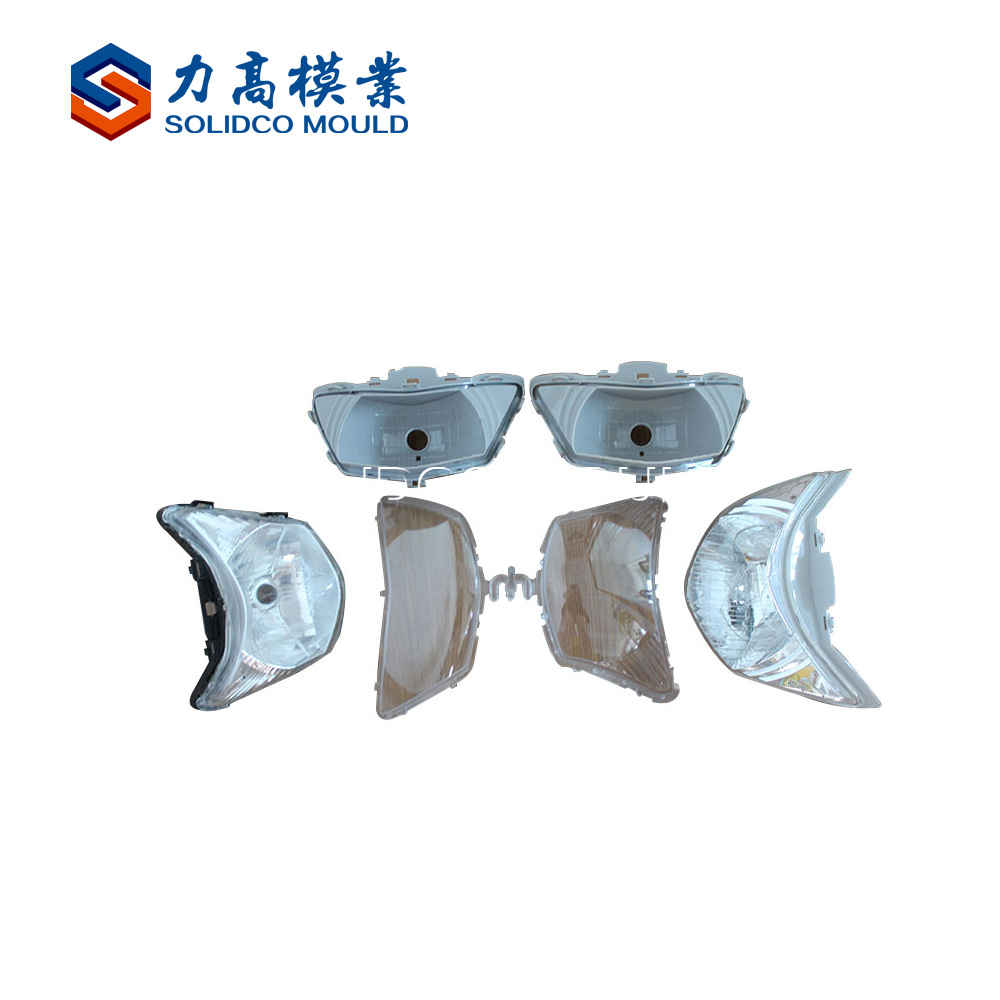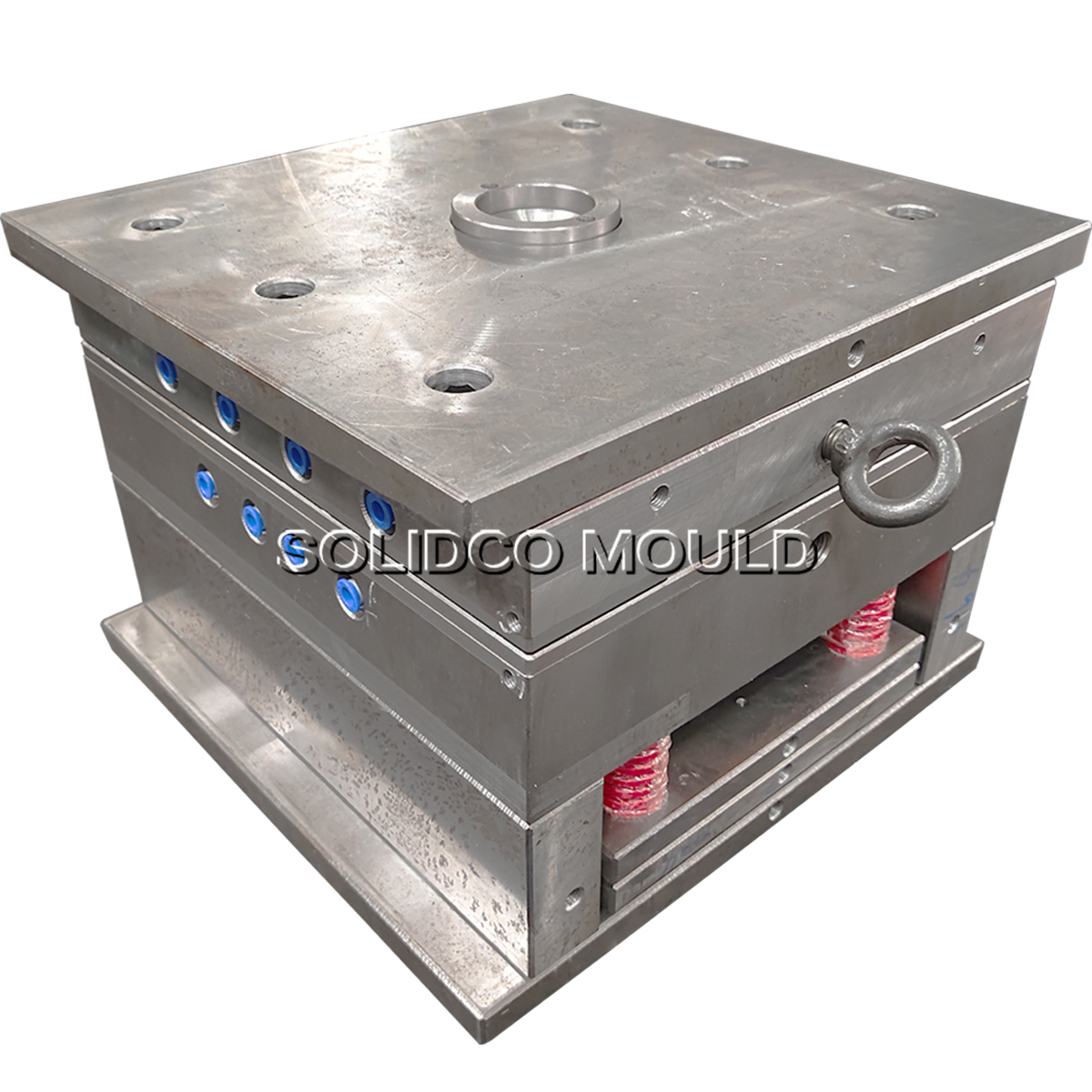What issues need to be paid attention to when producing PC polycarbonate products? PC has excellent performance, high transparency, good impact toughness, creep resistance, and wide operating temperature range. Process characteristics of PC: The melt viscosity is less sensitive to shear rate, but more sensitive to temperature, has no obvious melting point, the melt viscosity is high, the resin is easy to hydrolyze at high temperatures, and the product is easy to crack.
For these characteristics, we must pay special attention to different treatment:
- To increase the fluidity of the melt, it is not possible to increase the injection pressure but to increase the injection temperature;
- The runner and gate of the mold are required to be short and thick to reduce the pressure loss of the fluid, and at the same time, a higher injection pressure is required;
- The resin needs to be fully dried before molding and processing to control the moisture content below 0.02%;
- In addition, insulation measures should be taken for the resin during processing to prevent re-absorption of moisture;
- Not only reasonable product design is required, but also the molding process should be correctly mastered. For example, increasing the mold temperature and post-processing the product can reduce or eliminate internal stress. Adjust process parameters in a timely manner according to different conditions of the product.
Injection molding process of polycarbonate PChttps://solidcomould.com/product/car-parts-auto-parts-mould-sc2/
Raw material drying
PC plastics, even if they encounter very low moisture content, will undergo hydrolysis and break bonds, reduce molecular weight and reduce physical strength. Therefore, before molding and processing, the moisture content of polycarbonate should be strictly controlled below 0.02% to avoid a reduction in the mechanical strength of the molded product or abnormal appearance such as bubbles and silver streaks on the surface.
PC is extremely sensitive to water, so it must be fully dried before injection molding to reduce the moisture content to less than 0.02%. General drying conditions for PC: 100~120°C, for at least 4 hours;
Injection temperature
The injection temperature must take into account the shape, size and mold structure of the product. This decision can only be made after considering various aspects such as product performance and requirements.
Generally, the temperature selected during molding is between 270 and 320°C. If the material temperature is too high, such as exceeding 340°C, PC will decompose, the color of the product will become darker, and defects such as silver threads, dark stripes, black spots, and bubbles will appear on the surface. , while the physical and mechanical properties also decreased significantly. https://doi.org/10.1016/j.matpr.2023.07.168
PC is also very sensitive to temperature. The melt viscosity decreases significantly as the temperature increases. The barrel temperature is 250~320℃ (preferably not to exceed 350℃). Appropriately increasing the barrel temperature is good for PC plasticization. If necessary, perform internal stress annealing at an oven temperature of 125~135°C for 2 hours and then naturally cool to normal temperature.
Injection pressure
It has a certain impact on the physical and mechanical properties, internal stress, molding shrinkage, etc. of PC products, and has a greater impact on the appearance and demoulding properties of the products. Injection pressure that is too low or too high will cause certain defects in the products. Generally, The injection pressure is controlled between 80-120MPa. For products with thin walls, long processes, complex shapes, and small gates, in order to overcome the resistance of the melt flow and fill the mold cavity in time, a higher injection pressure (120 -145MPa). This results in a complete product with a smooth surface.
The fluidity is poor and high-pressure injection is required, but the large residual internal stress of the plastic parts (which may lead to cracking) must be taken into account. Injection speed: medium speed for wall thickness, high speed for thin wall.
Holding pressure and holding time
The size of the holding pressure and the length of the holding time have a great influence on the internal stress of PC products. If the holding pressure is too small, the feeding effect is small and vacuum bubbles or dents appear on the surface. If the holding pressure is too high, the pouring Large internal stress is easily generated around the mouth. In actual processing, high material temperature and low holding pressure are often used to solve the problem.
The selection of holding time should depend on the thickness of the product, gate size, mold temperature, etc. Generally, small and thin products do not require a long holding time. On the contrary, large and thick products should have a longer holding time. The length of the pressure holding time can be determined by testing the gate sealing time.
injection speed
It does not have a very obvious impact on the performance of PC products. Except for thin-walled, small gate, deep hole, and long process products, medium or slow speed processing is generally used, preferably multi-stage injection, generally slow-fast-slow multi-stage injection method.
Mold temperature
Mold temperature control: 85~120°C, generally 80-100°C is sufficient. For products with complex shapes, thin thickness, and high requirements, it can also be increased to 100-120°C, but it cannot exceed the mold thermal deformation temperature. High mold temperature can reduce the difference between mold temperature and PC material temperature, which can reduce the internal stress of the part.
Screw speed and back pressure
Due to the high viscosity of PC melt, it is beneficial for plasticization, exhaust, and maintenance of the plastic machine, and prevents the screw from being overloaded. The screw speed should not be too high. It is generally suitable to control it at 30-60r/min. The back pressure should be controlled between 10-15% of the injection pressure.
Use of additives
PC must strictly control the use of release agents during the injection molding process. At the same time, recycled materials cannot be used more than three times, and the usage amount should be about 20%.
PC injection molding has higher mold requirements:
1) Design a runner that is as thick and short as possible with few bends, and use circular cross-section runner and runner grinding and polishing to reduce the flow resistance of the molten material.
2) The injection gate can use any form of gate, but the diameter of the water entry level should not be less than 1.5mm.
Requirements for plastic machines for producing PC products:
It is required that the maximum injection volume of the product (including runners, gates, etc.) should not be greater than 70-80% of the nominal injection volume;
Clamping pressure: multiply 0.47 to 0.78 tons per square centimeter of projected area of the finished product (or 3 to 5 tons per square inch);
Machine size: The weight of the finished product is optimally about 40 to 60% of the capacity of the injection molding machine. If the capacity of the machine is expressed in polystyrene (ounces), it needs to be reduced by 10%, 1 ounce = 28.3 grams.
Screw: The length of the screw should be at least 15 diameters long, and its L/D is optimally 20:1. The compression ratio should be 1.5:1 to 30:1. The stop valve at the front end of the screw should be of the sliding ring type, and the resin flow gap should be at least 3.2MM.

